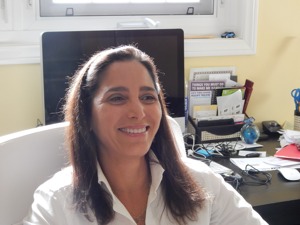Navigating the Political Storm Of ITAM

Anne Watson
This article was contributed by Anne Watson, Senior Systems Engineer/Altiris Consultant at Intuitive Technology Group.
In my experience, IT Asset Management (ITAM) is rarely embarked upon as a proactive initiative. Adopting this program is often the result of a software audit or a half-hearted attempt to demonstrate compliance for SOX or other outside auditing entities. It is not true of all organizations, but has proven to be more of a pattern and not the rule. In lieu of a cataclysmic event, ITAM is rarely given the resources it requires to embark on the stormy political sea that lay ahead.
It often begins with choosing the tool – the software that will gather all of the data needed to tie the information together. Although the tool is an important building block to tying all of the loose pieces together, it is, by far, the least important factor in this discipline. When I’ve received inquiries for my services, it usually begins with, ‘do you have experience with such and such software?’ Is it the software that drives the people or the people who drive the software? What are the driving factors, if not the tool?
Sponsors
First and foremost, without C-Level sponsor at the helm and designated Stakeholders to help steer, it is a volatile attempt to get buy-in from staff that are reticent to commit their time or resources towards something that is not in their ‘job description’.
Envision those C-Levels as the Captain of your vessel; there to set a course and determine direction, thereby creating a vision of what ‘could be’. Navigating towards the calmer seas of compliance and, ultimately, improving day-to-day operations by having vital information about the surrounding environment at the fingertips of those who need it.
People
A Captain without a Crew is a recipe for disaster. Those at the helm are paralyzed without having a skilled Crew to carry out the everyday tasks and duties that ITAM requires.
Automation is a wonderful thing, but too much automation without oversight and care can lead your vessel astray. People are not just integral in carrying out orders, but, with the ‘right stuff’, they have the analytical skills devoid in automation. They are there to monitor, drive and inform the Captain if the course they are on requires some deviation. Having a skilled Crew can make the difference in avoiding a potential disaster.
Process
‘Why do we do this?’ Should be the first question posed. What are the risks? What are the benefits? This can be likened to setting a course. Are we just going there for the sake of going there, or is there a set destination with an end goal.
Process tells us where we are going and how to get there: creating a tagging process; why we conduct physical audits; creating purchasing strategies for hardware and software; leasing as an option; up keeping a Software Catalog . . . any business problem can be delineated into a process that will help solve ongoing organizational needs . . . but it goes back to People to help identify and create those Processes.
Procedures
How do we do it? How do we arrive at our destination? Setting the course is only half the journey. Getting there requires the forethought on how to get there with the least amount of effort, but not taking shortcuts that could lead to the abyss.
Standardization and clarification on ‘how’ eliminates the guesswork. By working with the crew to find the most efficient methods reduces error, downtime and confusion. Further, communication of the Processes and Procedures established, will certainly reduce Corporate Chaos.
Tools
Last, but not least. Tools are important: from expensive software suites that perform discovery to barcode scanners, which reduce the very human error of ‘fat-fingering’ to barcode labels that are not easily peeled off by a bored employee.
Each environment may require a different set of tools, depending on the makeup of the environment. Every environment is unique and may require a different set of tools. Evaluate before a purchase is made, to ensure that it is the perfect fit for your organization. From a schooner to a cruise ship, not all tools will work for both vehicles. Tools should be chosen not just for today’s environment, but also with an evolving practice in mind.
For a ship to get to its destined port, it requires all of these components to be well defined. The most skilled crew can still get you there, even if your ship is falling apart – but it will be a rocky ride. A ship can get you started out on your voyage, but with no crew pitch in, it will succumb to the elements. However, if the course is set with care and no questions left unanswered, there can be smooth sailing ahead. Skip a step and you may amidst an unpredictable storm of chaos.
Can’t find what you’re looking for?
More from ITAM News & Analysis
-
Broadcom is removing expired VMware licences from its portal - take action now!
Hot on the heels of Broadcom’s announcement of the end of perpetual licences for VMware it has given customers barely a week to download any keys for licenses from its portal with expired support. This is ... -
Who Loses When Broadcom Wins?
News of a new Broadcom deal rarely arrives with great fanfare. The November 2023 VMware acquisition provoked open worry online and in business circles, with many critics wondering whether the former Hewlett-Packard spinoff’s reputation would prove ... -
Software Vendor Insights: What do the numbers tell us about the opportunities for ITAM negotiations?
What software vendor insights can be gained from the latest financial results from Amazon, Google, Broadcom, Salesforce, IBM and SAP? An important part of ITAM is paying close attention to the health of the companies we ...